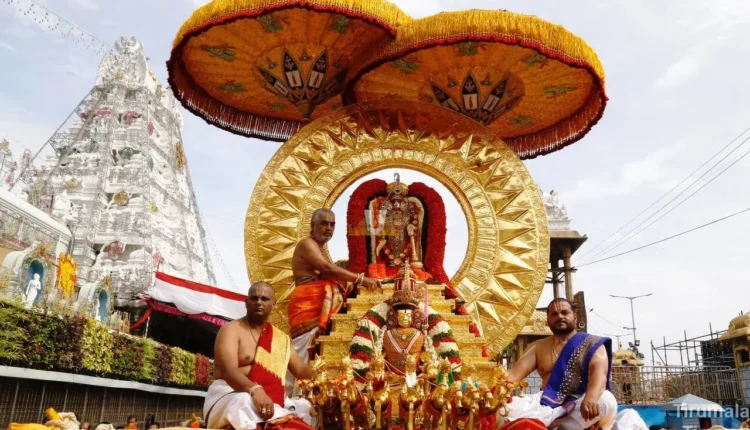Prabha : Platform Structure For Procession Of Gods In A Great Way
Prabha : Refers to a platform-like structure used for the procession of gods in the Prabhala culture found in the Palnadu region of the Guntur district, especially in areas like Kotappakonda, Quarry Balakoteswaraswamy, and Satrashala during Maha Shivratri festival in Guntur district.
In small temples, four people hold a platform made of two sticks, on which the statue or figure of the god is placed. Behind this platform, a structure resembling a temple is created using light sticks made of colored paper. The god is then paraded on this prabha structure.
Prabha & Traditon Over Telugu Regions
This tradition of using prabha spread throughout the Telugu-speaking regions of India and became a cultural practice of the Telugu people. The grandeur of the construction is often associated with its significance. In Kotappakonda, hundreds of colorful prabhas adorn the area, and an annual prize is awarded for the best.
The story behind the construction of prabha is associated with Anandavalli, a devotee of Lord Shiva from Konda Kavoor village near Kotappakonda. Every day, she used to climb the hill and worship the ancient deity Kotaiyaswamy. However, as she grew older, she was unable to climb the hill and requested the deity to come down with her. The deity appeared before her and instructed her to descend, assuring that he would follow her. But when she turned back to look, the deity transformed into a rock.
Gollabhama, realizing that the deity had turned into a rock, pleaded with the Lord, who then revealed that whenever a crore platforms come to his hill, he will descend from the hill. As a result, every year on Shivratri, the villages near Kotappakonda construct and bring with electric lights to the hill.
The Shiva temple in Narasa Raopet, Kotappakonda, Guntur District, is famous for its grand celebrations during Mahashivratri. Lakhs of devotees attend the festival, and the performance of is a highlight. The festival also features other activities such as Kolatam (a traditional dance form), Veeranga (swordplay), Harikatha (narrative storytelling), and the offering of head tonsure. Rituals like Rudrabhishekam and Sahasranamarchan are performed on Shivratri. The presiding deity of the temple is known as Koteswara and Trikoteswaraswamy, which became known as Kotappa in Telugu.
During the procession of carts through the villages, villagers come out to meet them, with women holding canes and men carrying swords. Depending on the occasion, specific prayers or chants, known as Dandakas, are recited. Sword bearers perform various actions such as walking backward and forward, jumping, and trampling on paravals (decorative materials) while people nearby play musical instruments called bunja.
The Prabhala culture, including the use is not only observed in Kotappakonda but also in other villages of the Palnadu region during Tirunallas. The unique movement of lights resembling a show is particularly seen in Kotappakonda. After the Tirunallu, the prabha carts are washed at the designated place.
Also Read : Rottela Panduga : Celebrated In Nellore Having A Fascinating History

